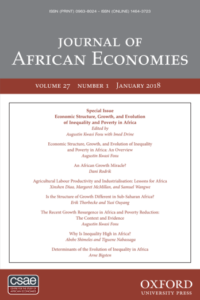Hi all,
It’s an early morning links round-up today, as I’m showing my visiting mother around all day (which mainly seems to consist of a tour of all the bookstores in the UK – if you ever wonder where I get my reading habits, it runs in the family). I’m going to let you all in on a secret: I am not a morning person, so bear that in mind when you read the inchoate and incoherent jumble of words below. If at work you ever want a thoughtful opinion from me, wait till after 10am. That’s no guarantee you’ll get it, but at least you’ll maximise your chances…
- As I’ve mentioned many times before, I don’t tweet, so I missed this until a friend sent it to me: Chris Blattman asked people for ‘unpopular’ research findings in development. Unsurprisingly, Lant Pritchett had a few. What makes Lant a great communicator is that he finds the controversy and argument in what he wants to get across – he either thrills or annoys you into listening. This list is as good as you’d expect from him: he points out that democracies have a much tighter variance in growth rates than non-democracies, so most major growth and poverty-eradication experiences come from non-democracies (with an obvious flip side); that in absolute terms, it’s still better to be poor in a rich place than rich in a poor one, whatever Angus thinks; and that any within-country gaps in outcomes still pale compared to the across-country gaps.
- Speaking of good communicators, I was pretty devastated when Hans Rosling died last year – he had a rare gift of being both an absolutely riveting speaker and being absolutely honest with data and evidence in building his discourse. Many great speakers rely on distorting analogies or reductio ad absurdium to get their points across. Hans used our own biases to surprise us with simple fact. Tim Harford writes about the book he was writing with his children, now published: unsurprisingly, the review is positive. I will be buying it, and encourage others to as well.
- I had a secondary school teacher who loved quoting Keynes (more generally, he just loved Keynes, as the macroeconomist in me still does). Every few lessons, someone would point out that ‘in the long run, this system should reach an equilibrium’, to which he would inevitably shoot back “in the long run, we’re all dead”. But how long is the long run? David Evans investigates, and finds that macroeconomists consider everything from 9 to 10,000 years to be ‘the long run’. (I’m not typically a fan of path-dependency papers that say X happening 300 years ago led to Y today without any real analysis of why it didn’t change or what mechanisms translate the effects to the present day, but that’s a discussion for another day.)
- Occupational segregation is increasingly part of the popular discourse on gender inequality in work, which is fantastic, as it’s slowly crowding out those naïve comparisons of average hourly compensation that have dominated the discussion to date (in developing contexts, Markus and his brilliant team in the World Bank do great work on this). This fantastic article by Maggie Koerth-Baker explains why this shift matters so much: it focuses our attention on a different set of root problems and solutions, and also allows us to see how uneven the progress to date has been. While things like education or outright discrimination have declined as explanatory factors in the gender pay gap in America, for example, they’ve declined more for white people than for others – so race is now a more important explanatory variable than it was 40 years ago.
- The Economist on the development of an academic science community of Africans, in Africa.
- Good research into the penalty you accrue in the labour market from being a refugee compared to an immigrant; Lant points out that development gains from movement far outweigh what you get from staying put, but not all forms of movement are equal. (And speaking of immigrants, the making of Little Punjab in Southhall).
- What do you think the best thing about The Rock is?… It doesn’t matter what you think the best thing about the Rock is! The Ringer lays out all you need to make an awesome movie starring The Rock. Mainly, you need the Rock. Then you need an enormous enemy for him to lay the smack down on. And if you manage to pair him up with an albino gorilla taking steroids (not you, Brock), well.
Have a great weekend, everyone!
R










